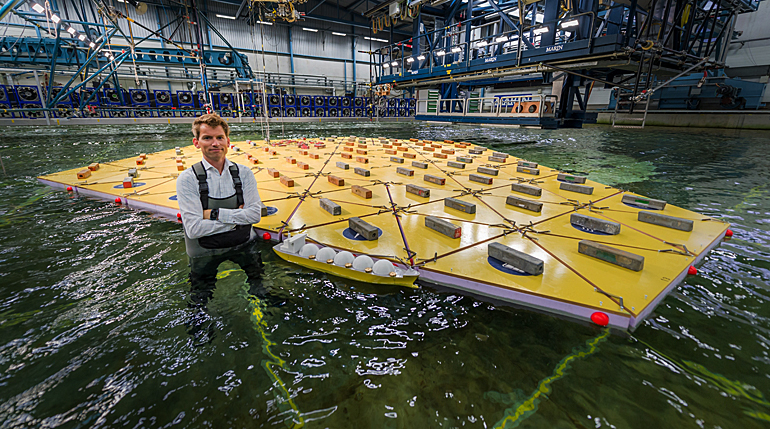Time will come that much of the world will be covered by water. The water portion of the Earth’s surface – at 70% – will eventually increase. That is the consequence of the melting of ice caps caused by global warming.
While scientists are looking for ways to reduce the use of fossil fuels and make use of the carbon that infiltrates the atmosphere, some engineers are suggesting that we adapt to rising sea levels instead, and that we should just build floating cities.
A team of Dutch researchers revealed their plans on putting up a floating mega-island which should accommodate houses, ports, farms, and parks. The timeline is within a decade to two.
The concept is a floating island wherein triangles of different sizes, 87 of them in total, are interconnected with each other to form into one huge island.
It will be made of concrete or steel that covers 3 square kilometers, or stretches 1.5 to 2 kilometers. All of the triangles will be anchored to the sea bed while also being fixed to the shore.

A scale model made of wood and polystyrene was presented to simulate the harsh conditions like wind, waves, and storms.
There is still no uncertainty, however, how the floating island could withstand the harsh weather conditions and tidal movements in real life. It is also a problem as to the source of power of the island, and to how much this will cost.
But potential investors were invited to check the model and realize the potential of the groundbreaking idea.
Video by MARIN
Olaf Waals from the Maritime Research Institute of the Netherlands (MARIN) said in an interview with AFP that some cities are starting to look into floating solutions, such as a floating park on the river which could be used as a recreational area close to the city center.
This suggestion, called the Space at Sea, is ideal in a low-lying country where there is intricate systems of dykes and canals. Waals recognized that building up dykes and pumping out the sands is not the most efficient solutions in preparing for the rise of sea levels.
“Floating ports and cities are an innovative solution which reflect the Dutch maritime tradition,” he said.
MARIN director Bas Buchner shared that discussions are underway with the local authority of crowded Haarlemmermeer and the Lelystad airport, both close to the burgeoning capital of Amsterdam. However, the project is still in the early stages overall.
The project received about $1.8million in European subsidies to conduct different feasibility studies on the whereabouts of the floating island in the next three years.
Source: Phys.org
[This article was originally written by Engineer Dee on August 2017 for GineersNow.]
